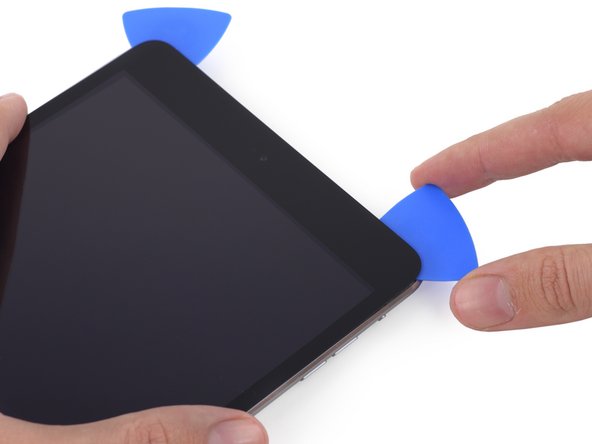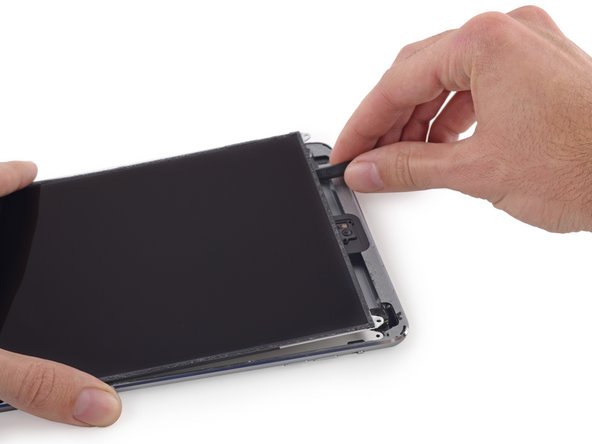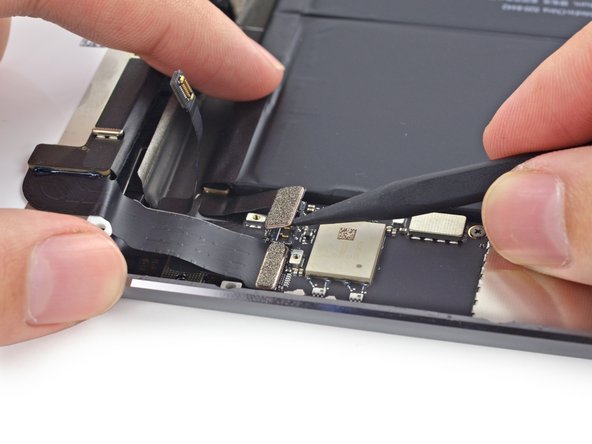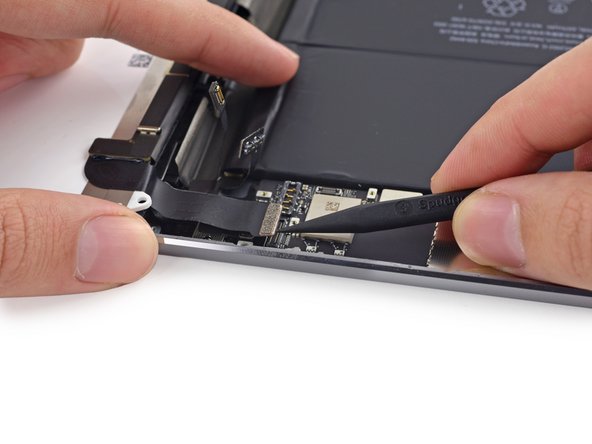Esta versión puede contener ediciones incorrectas. Cambie a la última instantánea verificada.
Qué necesitas
-
-
Calienta el iOpener durante treinta segundos.
-
Dependiendo de la potencia de tu microondas, puede necesitar más o menos tiempo. El iOpener está suficientemente caliente cuando apenas está demasiado caliente al tacto.
-
A lo largo del procedimiento de reparación, en cuanto el iOpener se enfríe, vuelve a calentarlo en el microondas treinta segundos más cada vez.
-
-
-
Llena una olla o cacerola con suficiente agua para sumergir completamente el iOpener.
-
Calienta el agua hasta que hierva. Apaga el fuego.
-
Coloca un iOpener en el agua caliente durante 2-3 minutos. Asegúrate de que el iOpener esté completamente sumergido en el agua.
-
Utiliza unas pinzas para extraer el iOpener calentado del agua caliente.
-
Seca bien el iOpener con una toalla.
-
Tu iOpener está listo para ser utilizado. Si necesita recalentar el iOpener, calienta el agua hasta que hierva, apaga el fuego y coloca el iOpener en el agua durante 2-3 minutos.
-
-
Este paso está sin traducir. Ayuda a traducirlo
-
If your display glass is cracked, keep further breakage contained and prevent bodily harm during your repair by taping the glass.
-
Lay overlapping strips of clear packing tape over the iPad's display until the whole face is covered.
-
Do your best to follow the rest of the guide as described. However, once the glass is broken, it will likely continue to crack as you work, and you may need to use a metal prying tool to scoop the glass out.
-
-
Este paso está sin traducir. Ayuda a traducirlo
-
Handling it by the tab, place the heated iOpener on the side of the iPad to the left of the home button assembly.
-
Let the iOpener sit for about five minutes to soften the adhesive beneath the glass.
-
-
Este paso está sin traducir. Ayuda a traducirlo
-
Carefully place a suction cup halfway up the heated side.
-
Be sure the cup is completely flat on the screen to get a tight seal.
-
While holding the iPad down with one hand, pull up on the suction cup to slightly separate the front panel glass from from the rear case.
-
-
Este paso está sin traducir. Ayuda a traducirlo
-
While holding the glass up with the suction cup, slide the point of an opening pick into the gap between the glass and body of the iPad.
-
Pull the suction cup's plastic nub to release the vacuum seal and remove the suction cup from the display assembly.
-
-
Este paso está sin traducir. Ayuda a traducirlo
-
Reheat and reapply the iOpener.
-
Let it rest for a few minutes to reheat the left edge of the iPad.
-
-
Este paso está sin traducir. Ayuda a traducirlo
-
Place a second opening pick alongside the first and slide the pick down along the edge of the iPad, releasing the adhesive as you go.
-
-
Este paso está sin traducir. Ayuda a traducirlo
-
Continue moving the opening pick down the side of the display to release the adhesive.
-
If the opening pick gets stuck in the adhesive, "roll" the pick along the side of the iPad, continuing to release the adhesive.
-
-
Este paso está sin traducir. Ayuda a traducirlo
-
Take the first pick you inserted and slide it up toward the top corner of the iPad.
-
If you can see the tip of the opening pick through the front glass, don't panic—just pull the pick out a little bit. Most likely, everything will be fine, but try to avoid this as it may deposit adhesive on the front of the LCD that is difficult to clean off.
-
-
Este paso está sin traducir. Ayuda a traducirlo
-
Reheat the iOpener and place it on the top edge of the iPad, over the front-facing camera.
-
-
Este paso está sin traducir. Ayuda a traducirlo
-
Slide the opening pick around the top left corner of the iPad to separate the adhesive.
-
-
Este paso está sin traducir. Ayuda a traducirlo
-
Slide the opening pick along the top edge of the iPad, stopping just before you reach the camera.
-
-
Este paso está sin traducir. Ayuda a traducirlo
-
Pull the pick out slightly, and slide the very tip gently along the top of the front-facing camera section of the top edge.
-
-
Este paso está sin traducir. Ayuda a traducirlo
-
Leave the opening pick in the iPad slightly past the front-facing camera.
-
Take a second pick and insert it to the left of the camera, where the first pick just was. Slide it back to the corner to completely cut any remaining adhesive.
-
Leave the second pick in place to prevent the corner adhesive from re-sealing as it cools.
-
-
Este paso está sin traducir. Ayuda a traducirlo
-
Insert the previous pick deeper into the iPad and slide it away from the camera toward the corner.
-
-
Este paso está sin traducir. Ayuda a traducirlo
-
Leave the three picks in the corners of the iPad to prevent re-adhering of the front panel adhesive.
-
Reheat the iOpener and place it on the remaining long side of the iPad—along the volume and lock buttons.
-
-
Este paso está sin traducir. Ayuda a traducirlo
-
Slide the top right opening pick around the corner to fully release the top edge of the glass.
-
-
Este paso está sin traducir. Ayuda a traducirlo
-
Insert a new opening pick and slide it to the middle of the right edge of the iPad, releasing the adhesive as you go.
-
-
-
Este paso está sin traducir. Ayuda a traducirlo
-
Continue to slide the pick down the right edge of the iPad, releasing the adhesive.
-
-
Este paso está sin traducir. Ayuda a traducirlo
-
Leave the opening picks in place and reheat the iOpener.
-
Set the reheated iOpener on the home button end of the iPad and let it rest for a few minutes to soften the adhesive beneath the glass.
-
-
Este paso está sin traducir. Ayuda a traducirlo
-
Slide the lower left pick to the lower left corner to cut the adhesive on that corner.
-
Leave the pick at the corner. Do not pry any farther, and do not remove the pick from the iPad.
-
Antennas
-
Home button cavity
-
Digitizer cable
-
The following steps will direct you where to pry to avoid damage to these components. Only apply heat and pry where directed.
-
-
Este paso está sin traducir. Ayuda a traducirlo
-
With a new pick, slice gently over the left-hand antenna, stopping before the home button.
-
Leave the pick in place before moving on.
-
-
Este paso está sin traducir. Ayuda a traducirlo
-
Insert the tip of one last pick next to the previous step's pick, and slide it beneath the home button.
-
Insert the pick slightly deeper and work it back toward the home button.
-
-
Este paso está sin traducir. Ayuda a traducirlo
-
Reheat and reapply the iOpener to the top bezel of the iPad.
-
-
Este paso está sin traducir. Ayuda a traducirlo
-
At the top of the iPad opposite the home button, you should have a pick lodged into each corner. Twist the picks to lift the glass slightly, separating the last of the adhesive along all four edges.
-
-
Este paso está sin traducir. Ayuda a traducirlo
-
Lift slowly and gently to further detach the adhesive along the lower edge.
-
-
Este paso está sin traducir. Ayuda a traducirlo
-
Once all of the adhesive has been separated, open the front glass like a page in a book and rest it on your workspace.
-
-
Este paso está sin traducir. Ayuda a traducirlo
-
Rock the camera housing up on one edge to free it from the adhesive and remove it from the front panel.
-
Return the front-facing camera housing to its recess in the rear case.
-
-
Este paso está sin traducir. Ayuda a traducirlo
-
Remove the following Phillips #00 screws securing the LCD:
-
Three 3.3 mm screws
-
One 4.5 mm screw
-
-
Este paso está sin traducir. Ayuda a traducirlo
-
Insert the flat end of a spudger under the LCD between it and the LCD shield plate and lift gently.
-
-
Este paso está sin traducir. Ayuda a traducirlo
-
Insert the spudger between the LCD and LCD shield plate and slide it to the far edge of the iPad.
-
-
Este paso está sin traducir. Ayuda a traducirlo
-
Hold the LCD with one hand, and the rear body of the iPad with the other.
-
Gently pull the LCD away from the speakers to separate the tape, being careful not to pull on the digitizer cable.
-
-
Este paso está sin traducir. Ayuda a traducirlo
-
Flip the iPad LCD like a page in a book, lifting near the camera and turning it over the home button end of the rear case.
-
Lay the LCD on the front panel glass to allow access to the display cables.
-
-
Este paso está sin traducir. Ayuda a traducirlo
-
Slide the tip of a spudger between the LCD and the adhesive tabs to free the display.
-
Push gently between each of the two adhesive tabs; be careful not to damage any of the nearby cables.
-
-
Este paso está sin traducir. Ayuda a traducirlo
-
Remove the seven 1.8 mm Phillips #00 screws from the LCD shield plate.
-
-
Este paso está sin traducir. Ayuda a traducirlo
-
Use the flat end of a spudger to pry the LCD shield plate up and out of the iPad.
-
Remove the LCD shield plate.
-
-
-
Retira los siguientes tornillos Phillips #00 del soporte del cable de la pantalla:
-
Un tornillo de 2,8 mm
-
Tres tornillos de 1,4 mm
-
-
-
Reemplazo del ensamblaje de panel frontal del Pad Mini 3 Wi-Fi
-
-
-
Utiliza una púa de apertura para romper el adhesivo que sujeta el cable plano del botón de inicio al cable del digitalizador.
-
-
-
En el panel frontal de reemplazo, remueve la pieza pequeña de adhesivo que cubre el cable digitalizador.
-
Dobla el cable digitalizador en si mismo y presiona firmemente para asegurar el adhesivo,
-
-
-
Despega la larga línea de plástico claro del interior del cristal.
-
Despega cualquier cubierta azul que cubra el adhesivo alrededor del perímetro del conjunto del panel frontal.
-
No remuevas ninguna cubierta de cobre de la región indicada, como la cinta amarilla Kapton o cinta de aislar negra.
-
Comprueba que el panel frontal este libre de huellas dactilares y suciedad antes de instalarlo en tu dispositivo.
-
-
-
Coloca el borde de una herramienta de apertura en cada lado del magneto cerca del borde superior izquierdo en el conjunto del panel frontal.
-
Coloca cuidadosamente el borde de la herramienta de apertura derecha de plástico debajo del imán.
-
Aprieta la herramienta de apertura de plástico izquierda debajo del imán y simultáneamente haz palanca y empújala hacia la herramienta de apertura de plástico derecha.
-
Cancelar: No complete esta guía.
19 personas más completaron esta guía.
6 comentarios
This is NOT the iPad Mini 3 LTE… please fix the guide so people won't break the LCD when they follow these instructions.
Remember, fixit get money from us buying parts. so the more we try or break, the more parts we might need. so they only will give us enough info for us to be brave to try to repair. that is why before I do any repairs that I haven tried in the past, I will check here and also you tube videos from other people who tried and compare notes or tips where I have to be careful.
Showing the wrong model iPad in the tutorial cost me a $55 mistake.













































































































































